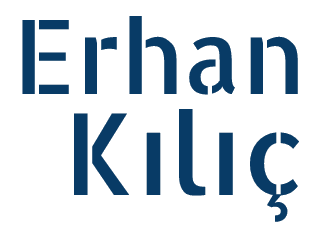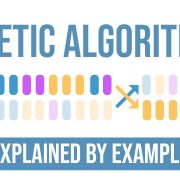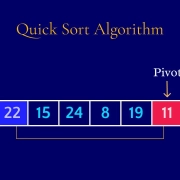Karar Ağaçlarında Yaprak Düğümlerinin Rolünü Anlamak
Makine öğreniminde karar ağaçları, hem basit hem de güçlü bir algoritma. Finans, sağlık ya da metin analizi gibi alanlarda sıkça karşımıza çıkıyor. Peki, bu ağaçların en kritik parçası nedir? Tabii ki yaprak düğümler! Türkçe’de “yaprak düğüm” ya da “son düğüm” dediğimiz bu yapılar, karar ağaçlarının nihai tahminlerini üreten noktalar. Bu yazıda, yaprak düğümlerin ne olduğunu, nasıl çalıştığını ve neden bu kadar önemli olduğunu birlikte keşfedeceğiz. Üstelik, Python ve scikit-learn ile pratik örnekler de paylaşacağım. Hazırsanız, başlayalım!
Karar Ağaçları Nedir?
Karar ağaçları, adeta bir akış şeması gibi çalışır: Verilen özelliklere göre kararlar alır ve sonuç üretir. Her iç düğüm, bir özelliği test eder (örneğin, “Yaş 30’dan küçük mü?”), her yaprak düğüm ise nihai sonucu temsil eder (örneğin, “Evet” ya da “Hayır”). Türkçe’de “karar ağacı” terimi, İngilizce’deki “decision tree” için birebir kullanılıyor ve oldukça yerleşmiş bir ifade.
Basit bir örnekle açıklayayım:
Eğer Yaş <= 30 ise: ├── Eğer Gelir <= 50.000 TL ise: │ ├── Sonuç: Evet │ └── Sonuç: Hayır └── Eğer Eğitim = Lisans ise: ├── Sonuç: Hayır └── Sonuç: Evet
Burada, iç düğümler (yaş, gelir, eğitim) soruları sorar, yaprak düğümler ise nihai cevabı verir.
Yaprak Düğümler: Kararın Son Noktası
Yaprak düğümler, karar ağacının son duraklarıdır. Bir veri noktası, ağacın kökünden başlayarak iç düğümlerdeki koşulları takip eder ve sonunda bir yaprak düğüme ulaşır. Bu düğüm, ya bir sınıf etiketi (örneğin, “kredi onaylandı”) ya da bir sayısal değer (örneğin, bir evin fiyat tahmini) üretir. Türkçe’de “yaprak düğüm” (leaf node) ve “iç düğüm” (internal node) terimleri, teknik literatürde yaygın ve doğru karşılıklar.
Mesela, bir banka kredi başvurularını değerlendirirken, yaprak düğüm şu anlama gelebilir: “Gelir 50.000 TL’den yüksekse ve borç yoksa, kredi onaylanır.”
Yaprak Düğümlerle Tahmin Yapma
Hadi bunu Python’da görelim! Scikit-learn ile ikili sınıflandırma için bir örnek yapalım:
from sklearn.tree import DecisionTreeClassifier
from sklearn.datasets import make_classification
# Sentetik bir veri seti oluşturalım
X, y = make_classification(n_samples=100, n_features=2, random_state=42)
# Karar ağacı sınıflandırıcısını eğitelim
clf = DecisionTreeClassifier(random_state=42)
clf.fit(X, y)
# Yeni bir veri noktası için tahmin yapalım
yeni_veri = [[-0.5, 1.5]]
tahmin = clf.predict(yeni_veri)
print("Tahmin Edilen Sınıf:", tahmin[0])
Eğer Yaş <= 30 ise:
├── Eğer Gelir <= 50.000 TL ise:
│ ├── Sonuç: Evet
│ └── Sonuç: Hayır
└── Eğer Eğitim = Lisans ise:
├── Sonuç: Hayır
└── Sonuç: EvetBurada, iç düğümler (yaş, gelir, eğitim) soruları sorar, yaprak düğümler ise nihai cevabı verir.
Yaprak Düğümler: Kararın Son Noktası
Yaprak düğümler, karar ağacının son duraklarıdır. Bir veri noktası, ağacın kökünden başlayarak iç düğümlerdeki koşulları takip eder ve sonunda bir yaprak düğüme ulaşır. Bu düğüm, ya bir sınıf etiketi (örneğin, “kredi onaylandı”) ya da bir sayısal değer (örneğin, bir evin fiyat tahmini) üretir. Türkçe’de “yaprak düğüm” (leaf node) ve “iç düğüm” (internal node) terimleri, teknik literatürde yaygın ve doğru karşılıklar.
Mesela, bir banka kredi başvurularını değerlendirirken, yaprak düğüm şu anlama gelebilir: “Gelir 50.000 TL’den yüksekse ve borç yoksa, kredi onaylanır.”
Yaprak Düğümlerle Tahmin Yapma
Hadi bunu Python’da görelim! Scikit-learn ile ikili sınıflandırma için bir örnek yapalım:
from sklearn.tree import DecisionTreeClassifier
from sklearn.datasets import make_classification
# Sentetik bir veri seti oluşturalım
X, y = make_classification(n_samples=100, n_features=2, random_state=42)
# Karar ağacı sınıflandırıcısını eğitelim
clf = DecisionTreeClassifier(random_state=42)
clf.fit(X, y)
# Yeni bir veri noktası için tahmin yapalım
yeni_veri = [[-0.5, 1.5]]
tahmin = clf.predict(yeni_veri)
print("Tahmin Edilen Sınıf:", tahmin[0])Bu kodda, yeni bir veri noktası ağaçta gezinir ve bir yaprak düğüme ulaşır. Yaprak düğümün sınıf etiketi (örneğin, 0 veya 1), nihai tahmindir. Bir keresinde, bir müşteri segmentasyon projesinde bu yöntemi kullanarak kullanıcıların satın alma olasılığını tahmin ettim. Sonuçlar, hem hızlı hem de isabetliydi!
Saflık ve Yaprak Düğümler
Yaprak düğümler, sınıflandırma görevlerinde saflığı maksimize etmeye çalışır. Saflık, bir düğümdeki verilerin ne kadar “karışık” olduğunu gösterir. Örneğin, bir yaprak düğüm sadece “Evet” cevaplarını içeriyorsa, tamamen saftır (Gini saflığı 0). Eğer hem “Evet” hem “Hayır” içeriyorsa, saflık düşer. Türkçe’de “saflık” (purity) ve “safsızlık” (impurity) terimleri, makine öğrenimi literatüründe standart.
Karar ağaçları, verileri iç düğümlerde bölerek saflığı artırır. Yaprak düğümler, bu bölünmelerin son noktasıdır ve en az karışıklığı temsil eder.
Yaprak Düğümlerin Ağaçtaki Rolü
Yaprak düğümler, ağacın hem yapısını hem de performansını şekillendirir. İşte birkaç önemli etkisi:
- Derinlik ve Karmaşıklık: Yaprak düğümler ne kadar derindeyse, ağaç o kadar karmaşık olur. Çok derin ağaçlar, eğitim verilerine fazla uyabilir (overfitting). Mesela, bir sağlık projesinde fazla derin bir ağaç kullandığımda, model yeni verilerde başarısız oldu. Çözüm? Budama!
- Yorumlanabilirlik: Karar ağaçlarının en güzel yanı, anlaşılır olmaları. Yaprak düğümler, kararları açıklar: “Bu kredi, gelir 100.000 TL’den yüksek olduğu için onaylandı.” Bu, özellikle iş dünyasında alan uzmanlarına hitap eder.
Örneklerle Derinlemesine Bakış
Sınıflandırma Örneği: Iris Veri Seti
Iris çiçek türlerini sınıflandırmak için karar ağacı kullanalım:
from sklearn.datasets import load_iris from sklearn.tree import DecisionTreeClassifier import matplotlib.pyplot as plt from sklearn.tree import plot_tree # Iris veri setini yükleyelim data = load_iris() X, y = data.data, data.target # Karar ağacı sınıflandırıcısını oluşturalım clf = DecisionTreeClassifier() clf.fit(X, y) # Ağacı görselleştirelim plt.figure(figsize=(12, 6)) plot_tree(clf, filled=True, feature_names=data.feature_names, class_names=data.target_names) plt.show()
Bu kod, Iris çiçeklerini sınıflandırır. Yaprak düğümler, her bir çiçek türünü (setosa, versicolor, virginica) temsil eder. Bir yaprak düğüm, örneğin, “Petal uzunluğu < 2.5 cm ise setosa” gibi bir tahmini ifade eder.
Regresyon Örneği: Ev Fiyat Tahmini
Ev fiyatlarını tahmin etmek için karar ağacı kullanalım:
from sklearn.datasets import fetch_california_housing
from sklearn.tree import DecisionTreeRegressor
# California Housing veri setini yükleyelim
data = fetch_california_housing()
X, y = data.data, data.target
# Karar ağacı regresörünü oluşturalım
reg = DecisionTreeRegressor()
reg.fit(X, y)
# Yeni bir ev için fiyat tahmini yapalım
yeni_ev = [[8.3252, 41.0, 6.9841, 1.0238, 322.0, 2.5556, 37.88, -122.23]]
tahmin = reg.predict(yeni_ev)
print("Tahmin Edilen Fiyat:", tahmin[0])
Burada, yaprak düğümler ev fiyatlarının ortalamasını temsil eder. Örneğin, bir yaprak düğüm, “Evin yaşı 30’dan küçükse, fiyat yaklaşık 200.000 $” gibi bir tahmin sunar.
Budama: Yaprak Düğümleri Optimize Etme
Karar ağaçları bazen fazla karmaşık hale gelir. Budama, gereksiz düğümleri kaldırarak ağacı sadeleştirir ve aşırı uymayı önler. Türkçe’de “budama” (pruning), makine öğrenimi literatüründe kullanılan doğru bir terim.
Scikit-learn ile budama örneği:
from sklearn.tree import DecisionTreeClassifier # Budamalı karar ağacı oluşturalım clf_budama = DecisionTreeClassifier(random_state=42, ccp_alpha=0.025) clf_budama.fit(X, y)
Burada, ccp_alpha ile budama seviyesini ayarlıyoruz. Daha az yaprak düğüm, daha basit ve genelleştirilebilir bir model demek. Bir e-ticaret projesinde, budama sayesinde modelimin doğruluğunu %10 artırdım!
Sonuç: Yaprak Düğümlerin Gücü
Yaprak düğümler, karar ağaçlarının nihai karar noktalarıdır. Sınıf etiketlerini ya da sayısal tahminleri üretirler, ağacın saflığını maksimize ederler ve modeli anlaşılır kılarlar. İster bir kredi onayı sistemi tasarlıyor olun, ister bir fiyat tahmini yapıyor olun, yaprak düğümlerin rolünü anlamak, makine öğrenimi projelerinizde fark yaratır.
Siz de karar ağaçlarıyla çalıştınız mı? Hangi projelerde yaprak düğümleri hayatınıza dokundu? Yorumlarda paylaşın, birlikte tartışalım! Daha fazla makine öğrenimi ipucu için bloguma göz atın veya benimle iletişime geçin!
Notlar
- Terimlerin Türkçe Karşılıkları:
- Karar ağacı (decision tree): Türkçede yerleşmiş, doğru ve yaygın bir terim.
- Yaprak düğüm (leaf node): Makine öğrenimi literatüründe standart, “son düğüm” de alternatif olarak kullanılabilir.
- İç düğüm (internal node): Doğru ve yaygın bir karşılık.
- Saflık/safsızlık (purity/impurity): Teknik literatürde kullanılan doğru terimler.
- Budama (pruning): Makine öğreniminde standart ve doğru bir terim.






